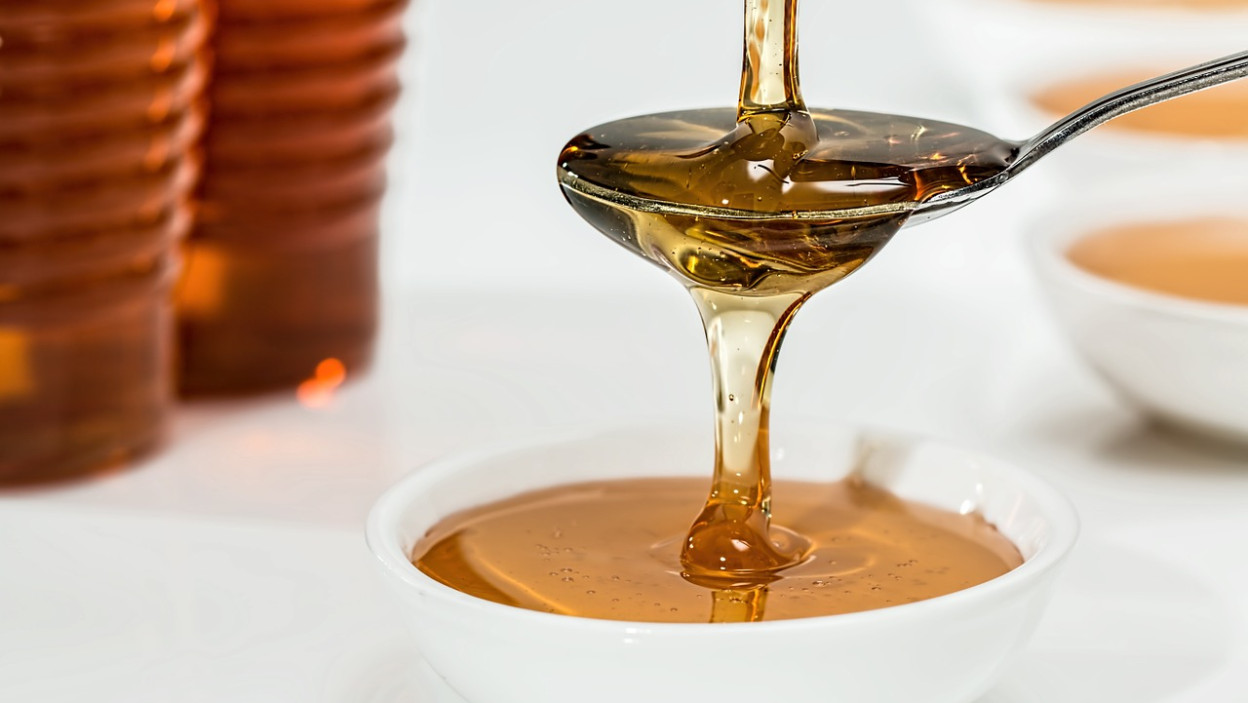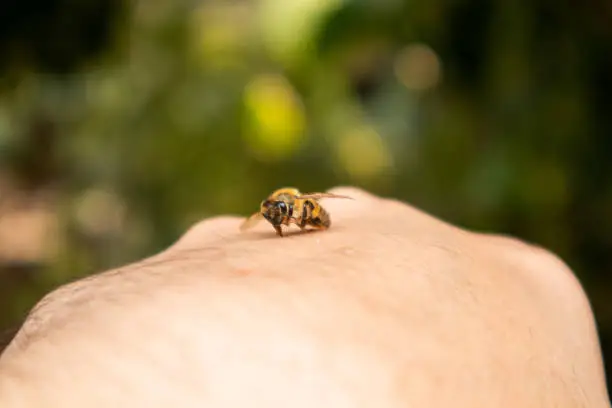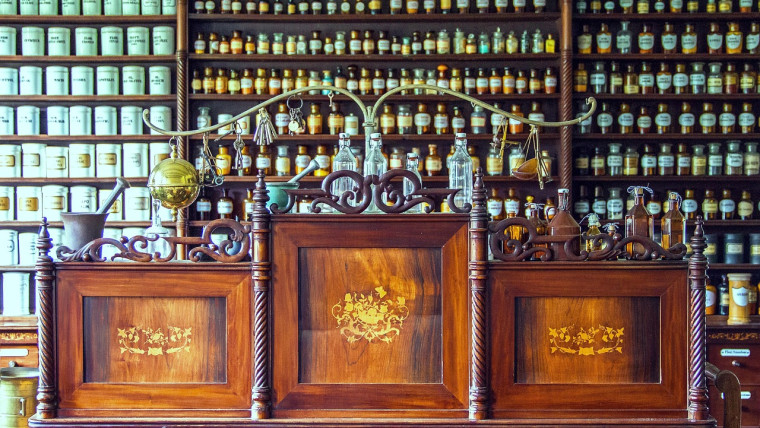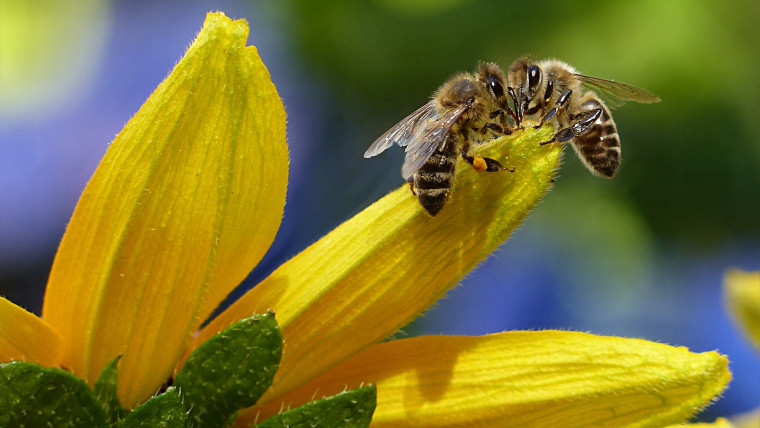
Few things can ruin a lovely day outdoors like an unexpected bee sting. The sudden sharp pain, followed by redness, swelling, and discomfort, can be quite distressing. While honey is often touted as a go-to remedy for bee stings, there are a variety of surprising solutions that may help alleviate the pain and discomfort caused by these pesky stingers. In this article, we’ll explore some alternative methods to manage bee sting pain and promote faster healing.
Understanding Bee Stings
Before delving into solutions, it’s essential to understand what happens when a bee stings. When a bee stings, it injects venom into your skin. This venom is responsible for the painful and sometimes allergic reactions people experience. For most individuals, the pain and discomfort from a bee sting will subside within a few hours or days, but there are ways to accelerate the healing process and ease the pain.
1. Baking Soda Paste: A Tried and True Remedy
Baking soda is a versatile household item that can help soothe the pain and itchiness of a bee sting. Mix a small amount of baking soda with water to create a thick paste, and apply it directly to the sting site. Leave it on for about 15-20 minutes, then rinse it off with cool water. Baking soda can help neutralize the venom, providing relief from the pain.
2. Aspirin or Pain Relievers
Over-the-counter pain relievers like aspirin or ibuprofen can help alleviate pain and reduce inflammation after a bee sting. Follow the recommended dosage on the packaging, and consult a healthcare professional if you have any concerns or are taking other medications.
3. Ice Pack: Nature’s Anesthetic
An ice pack can work wonders for reducing pain and swelling after a bee sting. Apply an ice pack wrapped in a cloth to the affected area for 15-20 minutes. The cold temperature can provide immediate relief by numbing the sting site and reducing inflammation.
4. Vinegar: An Unexpected Ally
Applying vinegar to a bee sting may help neutralize the venom and relieve pain. Simply soak a cotton ball in vinegar and gently dab it on the sting site for a few minutes. This method is particularly helpful for bee stings from more acidic bees, such as wasps.
5. Essential Oils: Nature’s Healing Properties
Certain essential oils, such as lavender or tea tree oil, possess anti-inflammatory and antiseptic properties that can help soothe a bee sting. Dilute a few drops of the oil with a carrier oil (like coconut or olive oil) and apply it to the sting site. These oils can speed up the healing process and provide relief from pain.
6. Toothpaste: Not Just for Teeth
Believe it or not, toothpaste can offer relief from bee sting pain. The cooling effect of toothpaste can help reduce discomfort. Apply a small amount of toothpaste to the sting and let it dry. Once it’s dry, gently wipe it off with a damp cloth.
7. Honey: Nature’s Antidote
While honey is often the first remedy that comes to mind for bee stings, it’s worth mentioning here. Honey has natural antibacterial properties and can help reduce pain and promote healing. Apply a small amount of honey to the sting and cover it with a bandage. This method can help soothe the pain and minimize the risk of infection.
8. Papaya: A Tropical Solution
The enzymes in ripe papaya have anti-inflammatory properties that can assist in reducing pain and swelling. Apply a small piece of ripe papaya directly to the sting site for 15-20 minutes. Wash it off with cool water, and you may experience some relief from the discomfort.
9. Cucumber: A Cool Compress
Cucumber is not only refreshing but also has anti-inflammatory properties that can help with bee stings. Slice a cucumber and apply the slices to the affected area for 15-20 minutes. The cool temperature and cucumber’s natural properties can alleviate pain and reduce swelling.
10. Calamine Lotion: Tried and Tested
Calamine lotion has been a go-to remedy for insect bites and stings for generations. Apply a thin layer of calamine lotion to the bee sting to relieve itching and discomfort. It can help dry out the sting site and speed up the healing process.
Preventing Future Bee Stings
As the saying goes, prevention is better than cure. To minimize the risk of bee stings, consider the following precautions:
- Avoid Brightly Colored Clothing: Bees are attracted to bright colors, so opt for light-colored clothing when spending time outdoors.
- Avoid Floral Prints: Floral patterns can also attract bees, so choose plain or less colorful clothing.
- Stay Calm: If a bee is near, remain calm and still. Sudden movements or swatting can provoke them to sting.
- Use Bee Repellent: When necessary, use bee repellents or sprays to deter bees from approaching you.
- Keep Food and Drinks Covered: Bees are attracted to sugary substances, so keep food and drinks covered when dining outdoors.
- Wear Shoes: Always wear shoes to protect your feet from accidental stings, especially in grassy areas.
- Avoid Fragrances: Bees are also attracted to strong scents, so consider using unscented products when outdoors.
In conclusion, while honey is a well-known remedy for bee stings, there are various surprising solutions that can help alleviate pain and discomfort. From common household items like baking soda and vinegar to the natural healing properties of essential oils, these remedies can provide relief and promote faster healing. By being prepared and taking precautions to prevent bee stings, you can enjoy the outdoors without the fear of unexpected stings.








Bee Sting Relief Effective Treatments and Quick Remedies
Beyond Honey: Surprising Solutions for Bee Sting Pain
The Importance of Quick Action: Treating Bee Stings at Home
Emergency First Aid for Bee Stings: A Step-by-Step Guide